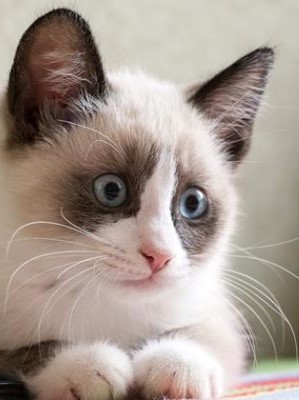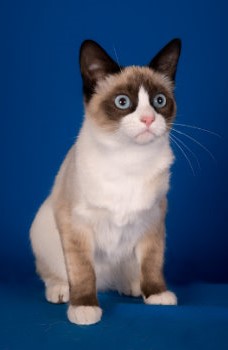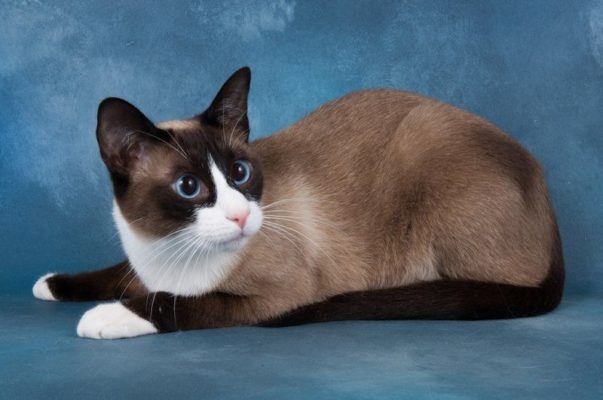Snowshoe
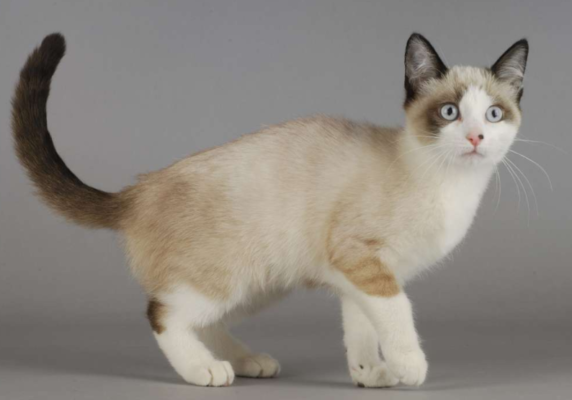
A Snowshoe cat is a unique personality that is always fun to live with. Snowshoes are very intelligent but at the same time gentle and affectionate pets. They love to spend time in the company and prefer not to be home alone all day. Usually, these cats are more attached to one family member, but they also maintain a warm relationship with everyone else. They get along well with other pets, including dogs.
Table of Contents
Breed Information
| Origin | United States |
| Size | Males 27-30 cm Females 25-28 cm |
| Weight | Males 3.5-6 kg Females 2.5-5 kg |
| Fur Type | Short-haired |
| Color | Chocolate, blue, cream, tortoiseshell, beige, as well as various combinations of these colors |
| Lifestyle | Indoors |
| Lifespan | 9-15 years |
| FIFe Classification | Category III: “Short-haired and Somali” Breed designation – SNO |
| WCF Classification | – |
| TICA Classification | SN |
| Group | Short-haired cats, popular cats, apartment cats (docile cats) |
| Price | $600-1000 |
Breed Photos
Origin History
The Snowshoe is a breed that is the ancestor of the Siamese cat. The emergence of the breed dates back to the late Victorian era. It is this time that dates the origin of the Siamese cat breed. The modern breed of Snowshoe began to be developed in the mid-20th century. It was a breeder from Philadelphia named Dorothy Hynds-Dogerty who decided to create the Siamese cat in 1960. She began the creation of the breed with three Siamese kittens with white paws. She laced them with a domestic short-haired cat with markings that looked like a tuxedo – black hair all over the body and a white belly, chest, throat, and paws. This interbreeding resulted in the modern breed of Snowshoe.
After a while, Dorothy Hynds-Dogerty gave up breeding cats, but other breeders who saw a future continuing the lineage of interesting and beautiful cats continued her work. The Cat Fanciers Federation recognized the Snowshoe cat breed in 1982, followed by the American Cat Fanciers Association in 1990 and the International Cat Fanciers Association in 1994. However, the breed remains unrecognized by the Cat Fanciers Association.
Appearance
Like the Siamese, the Snowshoe is a pointed cat, which means it has a light body with dark areas. With a dark tail, limbs, and ears and a “masquerade mask” around the eyes, separated by a “V-shaped” white mark between the blue eyes and above the muzzle. The coat of Snowshoe cats is short without an undercoat. The most common colors are chocolate, blue, cream, tortoiseshell, beige, white, or various combinations of these colors. The Snowshoe is a medium-sized cat with a medium build. Its head may be triangular or round. Its ears are wide and pointed, its eyes are nut-shaped, and its color is always a touch of blue.
Character
A Snowshoe cat is a unique personality that is always fun to live with. Snowshoes are very intelligent but at the same time gentle and affectionate pets. They love to spend time in the company and prefer not to be home alone all day. Usually, these cats are more attached to one family member, but they also maintain a warm relationship with everyone else. They get along well with other pets, including dogs.
A Snowshoe cat can act as the mistress of the house or be the cat’s “mom” to the person who is constantly checking on her owner’s activities. She can follow him around all day and keep an eye on what he is doing. Most of the cats of this breed are active and active. They are very talkative, which is not surprising, given their Siamese descent. Fortunately, the Snowshoe has a soft and melodious voice that is pleasing to the ears.
Care
Taking care of a Snowshoe cat is not much trouble. The main thing to remember is the importance of basic hygiene procedures to keep the cat clean and healthy. Snowshoe should be brushed once or twice a week to remove dead hair and distribute sebum. It will help keep the coat nice and healthy. It is recommended to observe daily oral hygiene, namely not to forget about brushing the teeth. Besides, we should remember to trim nails, which is important not only for the cat but also to keep furniture and parquet in the house in one piece. It is recommended to keep the Snowshoe indoors. It will help protect against diseases spread by other cats, as well as other outdoor dangers. You can take your cat out for a walk once in a while, but only with a leash and a collar.
Education
The cat should be brought up at an early age. Getting used to the litter box and feeding bowl, sleeping place, using the scratching post, understanding that you should not climb on the table will not cause much trouble. A cat will quickly learn all these rules if you find the right approach. The main thing in training is not to use rudeness and various punishments.
Since Snowshoes are intelligent cats, they can be taught hygiene and house rules, and several commands and tricks. These pets often learn how to open doors, run in a race with other cats, and enjoy playing ball. They are active, athletic cats that respond well to games that get them moving. Any training in the form of play will bring pleasure to the pet, and the results will not be long in coming.
Common Diseases
In general, a Snowshoe is a fairly healthy and incredibly hardy cat. The life expectancy of this breed can be up to 15 years. Like most cat breeds, the Snowshoe is prone to kidney and heart problems, as well as worming. Other diseases that have been seen among the Snowshoe cat breed include such things as gingivitis, amyloidosis of the liver, and peritonitis. If a cat gets sick, the main thing is to take it to a veterinarian in time to provide proper care. These pets may also exhibit problems peculiar to Siamese cats, namely tail deformity and squinting. Fortunately, these abnormalities do not affect the normal way of life.
Nutrition
Feeding a Snowshoe is an important part of caring for this cat. Each cat is unique, and each cat will have different preferences, but there are still a few basic feeding guidelines to know. Snowshoe cats need a balanced diet three times a day. They can be fed natural food and commercial food.
When choosing natural food, it is important to remember that it will bring a little more hassle than feeding industrial food. You need to be prepared to buy food and cook specifically for the cat, and always keep in mind that it is strictly forbidden to feed it from the family table. The pet’s diet should include lean meat, boneless saltwater fish, dairy products, vegetables, and herbs. Additionally, the cat’s diet should be enriched with vitamin supplements. Feeding industrial food is much less hassle because it contains all the necessary vitamins and minerals that the cat needs. Food should be of high quality, so it is recommended to choose a premium food.
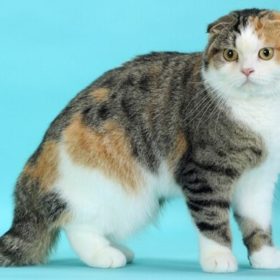 Scottish Fold
Scottish Fold Ural Rex Shorthair
Ural Rex Shorthair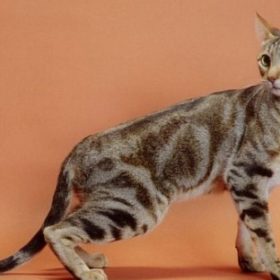 Sokoke
Sokoke Ocicat
Ocicat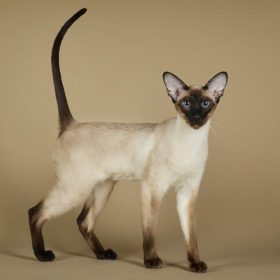 Siamese
Siamese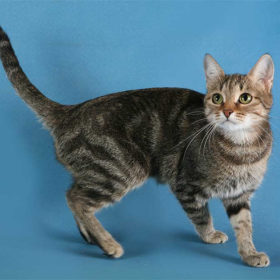 Brazilian Shorthair
Brazilian Shorthair